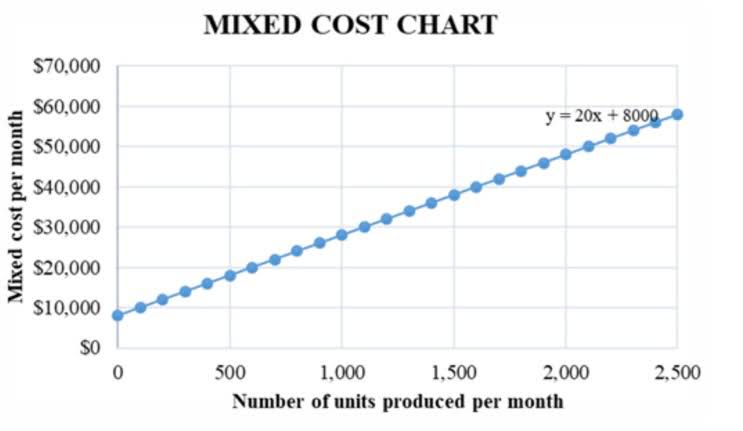Content

That progress report describes the Boards’ affirmation of the priorities laid out in their June 2010 report described above. It also describes how the Boards modified aspects of their plans for other projects in order to put them in the best position to complete the priority projects by the June 2011 target date. The FASB and its counterpart in Canada undertook a joint project that resulted in both Boards issuing improved standards on segment reporting that were substantially the same. When the FASB took on a project to revise its accounting standard on foreign currency, it decided to include representatives of the UK Accounting Standards Board, the Accounting Standards Board of Canada, and the IASC on its Task Force.
Thanks. Looks like it's the IFRS vs GAAP. IFRS has an account called the Biological Assets – which $CURLF tracks as the product goes from seed to sellable inventory. GAAP doesn't have such a term.
— Cameron Stewart (@cstewartcfa) November 22, 2021
GAAP is a common set of generally accepted accounting principles, standards, and procedures that public companies in the U.S. must follow when they compile their financial statements. Liabilities are classified as current or non-current liabilities in financial statements prepared according to GAAP accounting standards, depending on the time period allotted for the company to repay the debts. In July 2012, the SEC staff issued its final staff report on the “Work Plan for Consideration of Incorporating International Financial Reporting Standards into the Financial Reporting System for U.S.
Implications Of Potential Convergence
The U.S. Congress and the SEC also became involved in the issues of international accounting standards. At the end of the decade, the FASB directly participated in the working party that led efforts to restructure the IASC into the IASB. One of the ways the SEC has pursued these goals is by upholding the domestic quality of financial reporting as well as encouraging the convergence of the U.S. and IFRS standards.
What is Golden Rule in accounting?
Debit what comes in, Credit what goes out. Debit the receiver, Credit the giver. Debit all expenses Credit all income.
GAAP determines the way of reporting the amount of control one entity has in another.According to this standard, control is focused on who control financial interests of the company by analyzing voting rights. The FASB’s membership on the ASAF is an opportunity to represent U.S. interests in the IASB’s standard-setting process and to continue the process of improving and converging U.S.
Pro Forma Statements Vs Gaap Statements: Whats The Difference?
Accounting RulesAccounting rules are guidelines to follow for registering daily transactions in the entity book through the double-entry system. Here, every transaction must have at least 2 accounts , with one being debited & the other being credited. However, this proposal was put on hold because of leadership changes at the SEC .
ICAEW submits views on the upcoming periodic review of FRS 102 – economia
ICAEW submits views on the upcoming periodic review of FRS 102.
Posted: Tue, 16 Nov 2021 08:24:59 GMT [source]
The accountant must then analyze the unique requirements of the industry in which the business works. Dividends paid must be recorded in the financing section, whereas dividends received must be recorded in the operational section, according to GAAP. However, companies can categorize dividends in a variety of ways while adhering to IFRS rules. Dividends paid can be classified as operational or financing, and dividends received as operating or investing. While GAAP and IFRS have a lot in common, there are a few differences that go beyond the locations where they’re used. Furthermore, IFRS, which aspires to provide a uniform worldwide language for company accounting issues, has been adopted by more than 144 nations throughout the world. However, while the SEC constantly indicates its desire to convert from GAAP to IFRS, progress is slow.
Inventory Valuation Methods
The International Financial Reporting Standards , the accounting standard used in more than 144 countries, has some key differences from the United States’ Generally Accepted Accounting Principles . International Financial Reporting Standards are a set of accounting rules currently used by public companies in 166 jurisdictions. Accounting principles are the rules and guidelines that companies must follow when reporting financial data. Perhaps the most notable specific difference between GAAP and IFRS involves their treatment of inventory. IFRS rules ban the use of last-in, first-out inventory accounting methods. Both systems allow for the first-in, first-out method and the weighted average-cost method.
IFRS generally uses the expected value in its measurement of the amount of the liability recognized, while the amount under US GAAP depends on the distribution of potential outcomes. As such, the same scenario can lead to differences in the recognition, measurement and even disclosure of contingent liabilities if the company was reporting under US GAAP or IFRS.
International Financial Reporting Standards Ifrs
Companies may be required to follow industry-specific norms and guidelines under GAAP, whereas IFRS principles demand judgment and interpretation to determine how they should be used in a specific context. In comparison to GAAP, IFRS is more general in terms of revenue recognition. It has unique standards for recognizing revenue across diverse industries. GAAP is a compulsory guideline for a corporation to release its financial statements outside of the company. Simply put, if a company’s stock is publicly listed, financial statements must comply with US regulations. The Canadian Generally Accepted Accounting Principles were a set of standards, guidelines, and procedures dealing with accounting. In April, the FASB and IASB reported on their progress toward completion of the convergence work program.
- However, this proposal was put on hold because of leadership changes at the SEC .
- In March, the FASB hosted the semi-annual meeting of national standards setters in New York City.
- According to GAAP, there are no recognitions until a company completes the exchange of a good or service.
- We also allow you to split your payment across 2 separate credit card transactions or send a payment link email to another person on your behalf.
- But, judging from the happenings over the years, the Securities and Exchange Commission may never switch to International Financial Reporting Standards in the near future.
Under GAAP, however, the calculation takes into account averages of the individual interim period. Further, both GAAP and IFRS differ in methodology for the treatment of accounting items. GAAP is more inclined towards the literature, whereas in IFRS, reviewing of facts pattern is more thorough.
Roadmap: Comparing Ifrs Standards And U S Gaap
US GAAP defines an asset as a future economic benefit, while under IFRS, an asset is a resource from which economic benefit is expected to flow. GAAP emphasizes smooth earning results from year to year, giving investors a view of normalized results. Taxes, for example, are reported based on statutory rates, not on what the company actually paid. They are designed to help investors understand average capital spending and taxation for the company. What follows is an overview of the differences between the accounting frameworks used by GAAP and IFRS.
- In 2008, the SEC floated the idea of adopting IFRS as the primary financial reporting regime for U.S. companies.
- In September 1999, the FASB published its second edition of an IASC-U.S.
- However, some differences will still continue to exist between the two systems.
- The International Financial Reporting Standards , the accounting standard used in more than 144 countries, has some key differences from the United States’ Generally Accepted Accounting Principles .
- Current liabilities are debts that the company expects to repay within the next 12 months, while long-term liabilities are debts with a repayment period longer than 12 months.
- The Securities and Exchange Commission is currently considering a proposal that, if approved, would allow domestic companies to supplement their GAAP results with IFRS results.
LIFO accounting means inventory acquired at last would be used up or sold first. Businesses prepare their Financial Statements using the two main sets of accounting standards namely GAAP and IFRS. Meaning there are very specific rules that apply to different kinds of companies. These rules vary widely based on size, industry, and a variety of other factors.
Report Contents
In other words, revenues are recognized when there is a clear evidence of a fix and determinable fee arrangement and collectability is reasonably assured. According to these principles, revenue represents actual or expected cash inflows that have occurred or will result from the entity’s ongoing operations. We are the American Institute of CPAs, the world’s largest member association representing the accounting profession. Today, you’ll find our 431,000+ members in 130 countries and territories, representing many areas of practice, including business and industry, public practice, government, education and consulting. In November 2010, the FASB and IASB issued a quarterly progress report on the status of their work to complete the MoU.
Timely and necessary convergence in ESG reporting – BusinessWorld Online
Timely and necessary convergence in ESG reporting.
Posted: Sun, 28 Nov 2021 13:37:26 GMT [source]
But those aren’t as important when we’re discussing US’ accounting practices. GAAP requires splitting the current liabilities into two categories – Current and Non-Current liabilities. Current liabilities are those that the company can settle within 12 months. Non-current liabilities are the long term debt with a time period of more than 12 months.
The IASB consists of 15 members from nine countries, including the United States. It is funded by contributions from major accounting firms, private financial institutions and industrial companies, central and development banks, national funding regimes, and other international and professional organizations throughout the world. As a further affirmation of that commitment, the Boards issued a joint statement describing their plans and milestone targets for achieving the GAAP vs IFRS goal of completing major MoU projects by mid-2011. On November 7, 2007, the Financial Accounting Foundation and the FASB responded to the SEC’s request for comments on its Concept Release . Convergence of accounting standards can best be achieved by developing high- quality, common standards over time. The FASB and IASC undertook concurrent projects to improve their earnings per share standards with a specific objective of eliminating the differences between them.

The Boards were giving priority to three remaining projects on their MoU as well as their joint project on insurance. The Boards also agreed to extend the timetable for those priority projects beyond June 2011 to permit further work and consultation with stakeholders in a manner consistent with an open and inclusive due process. The Boards issued a progress reportthat provides details on the timeline for completion of the MoU projects.
Although we endeavor to provide accurate and timely information, there can be no guarantee that such information is accurate as of the date it is received or that it will continue to be accurate in the future. No one should act upon such information without appropriate professional advice after a thorough examination of the particular situation.

While impairment is frequently irreversible, if the factors that caused it are no longer present, an asset’s value can increase after it has been identified. Both GAAP and IFRS require revenue to be realizable and earned before it is recognized, but they differ as to when these criteria are met.
Why countries do not adopt IFRS?
IFRS is a fairly complex and cumbersome accounting system, and will require a lot of training & professional support for implementation. It will be both costly & disrupting, so the country needs to be adequately prepared for adopting it. Each country has its own GAAP.
In 2020, nothing in the world was left untouched by the effects of COVID-19, including the standard-setting agenda. After more than five years of unprecedented accounting change under both IFRS Standards and US GAAP, timelines were extended and the International Accounting Standards Board and the FASB provided targeted guidance offering some accounting relief.
I confirmed with $TCNNF this inventory difference is GAAP vs IFRS.
— Cameron Stewart (@cstewartcfa) November 23, 2021
IFRS allows corporations and individual investors to know exactly what is going on with a firm, allowing them to make informed financial decisions. GAAP standards allow to recognize revenue from sales of good when delivery has occurred or ownership has been transferred.
The following differences outlined in this section affect what financial information is presented, how it is presented and where it is presented. Next, cross-border mergers and acquisitions (M&A) have emerged as method for companies to enter to new markets, and global trends suggest increased deal volume is on the horizon. We have compiled a single cheat sheet to outline the key differences between US GAAP and IFRS. You can download the complete US GAAP vs IFRS Cheat sheet for free below. The video below compares the treatment of fixed assets under IFRS and GAAP. The US SEC makes it mandatory for publicly traded companies to submit different types of SEC filings, forms include 10-K, 10-Q, S-1, S-4, see examples.
Though the organizations overseeing both GAAP and IFRS are working to minimize the differences between the two frameworks, there are still a few differences between the GAAP vs. IFRS. To better understand the two standards, it is important to understand the differences between GAAP vs. IFRS. Any company that wants to do business globally, including in the US, must understand the differences between the two. Although the merging efforts were made on financial performance reporting, it seems that the main problems lie with the difference in the method of the U.S.
Author: David Ringstrom
